Sign up for daily news updates from CleanTechnica on email. Or follow us on Google News!
A press release is out on Candela’s new P-12 and how it has begun service as public transport on the waterways of Stockholm, Sweden. But before we get into that, I want you to close your eyes.
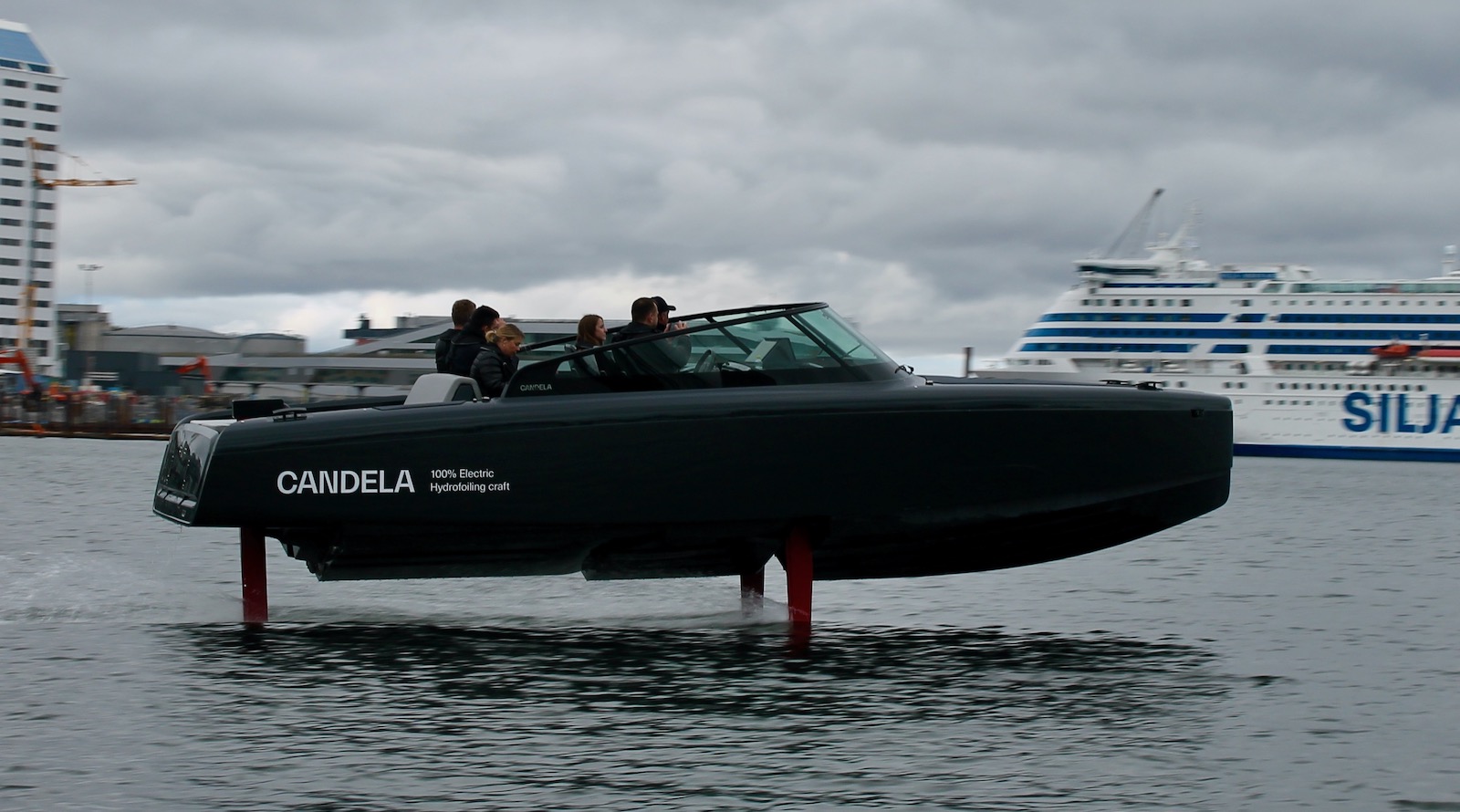
Well, I mean, your inner eye, because I want you to keep reading and focus on what you might hear and sense with your body in the following scenery. Imagine you are on a leisure powerboat that starts off and quickly reaches 15 knots (30 kph, 19 mph). Imagine the absence of the expected roar of an engine, leaving only the distant whirring sound of propeller screws in the water gaining speed. As the speed picks up towards 25 knots — imagine the growing intensity of the water hitting the hull and the increasing sound of water splashing up, until now suddenly disappearing.
Silence.
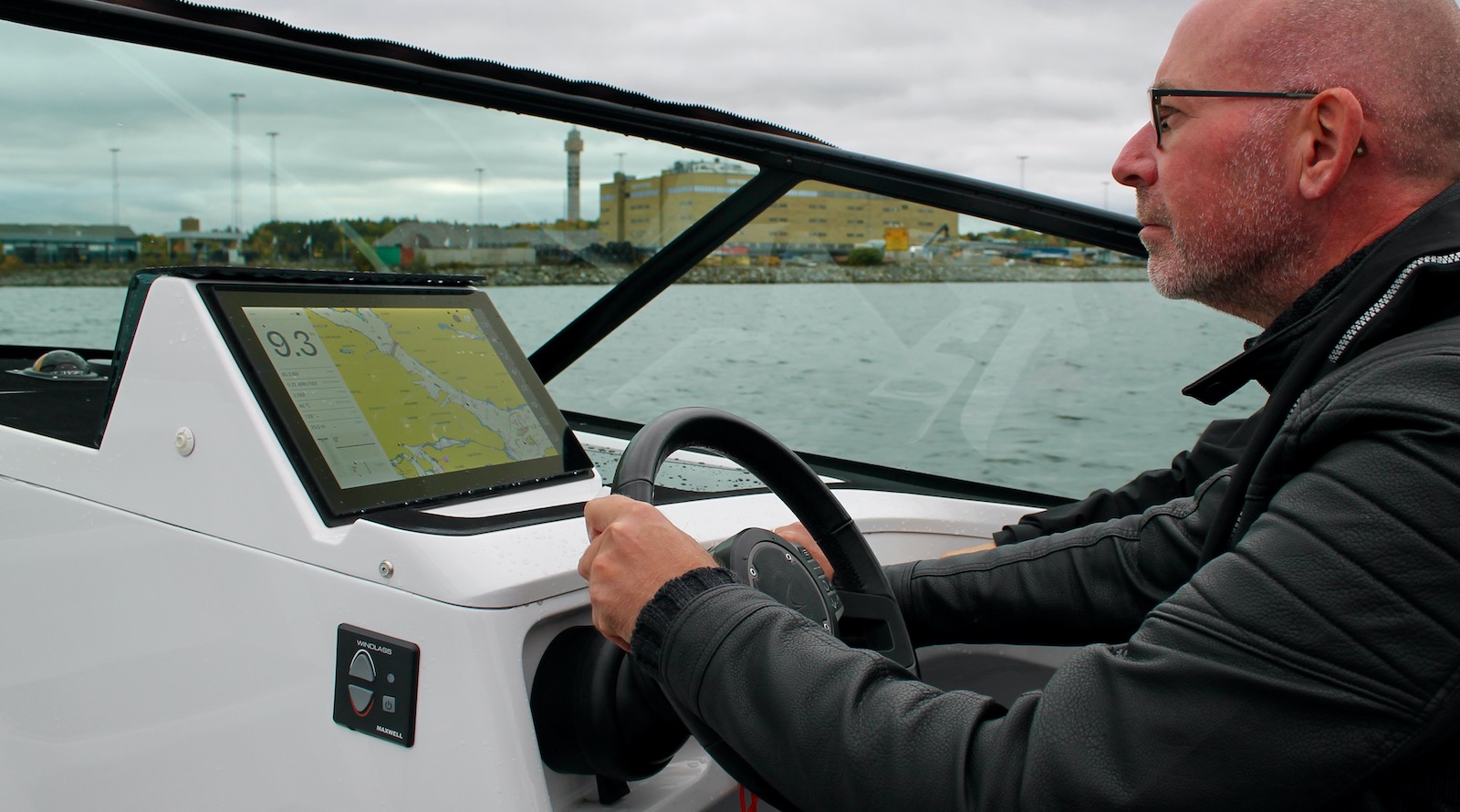
There is a windscreen, so you may hear the wind, but you don’t feel it. The faint whirring sound of the propellers is also lower, since they are now even more submerged. The hull is completely stable. You can speak with a normal voice to everyone onboard. You are flying. On wings in the water.
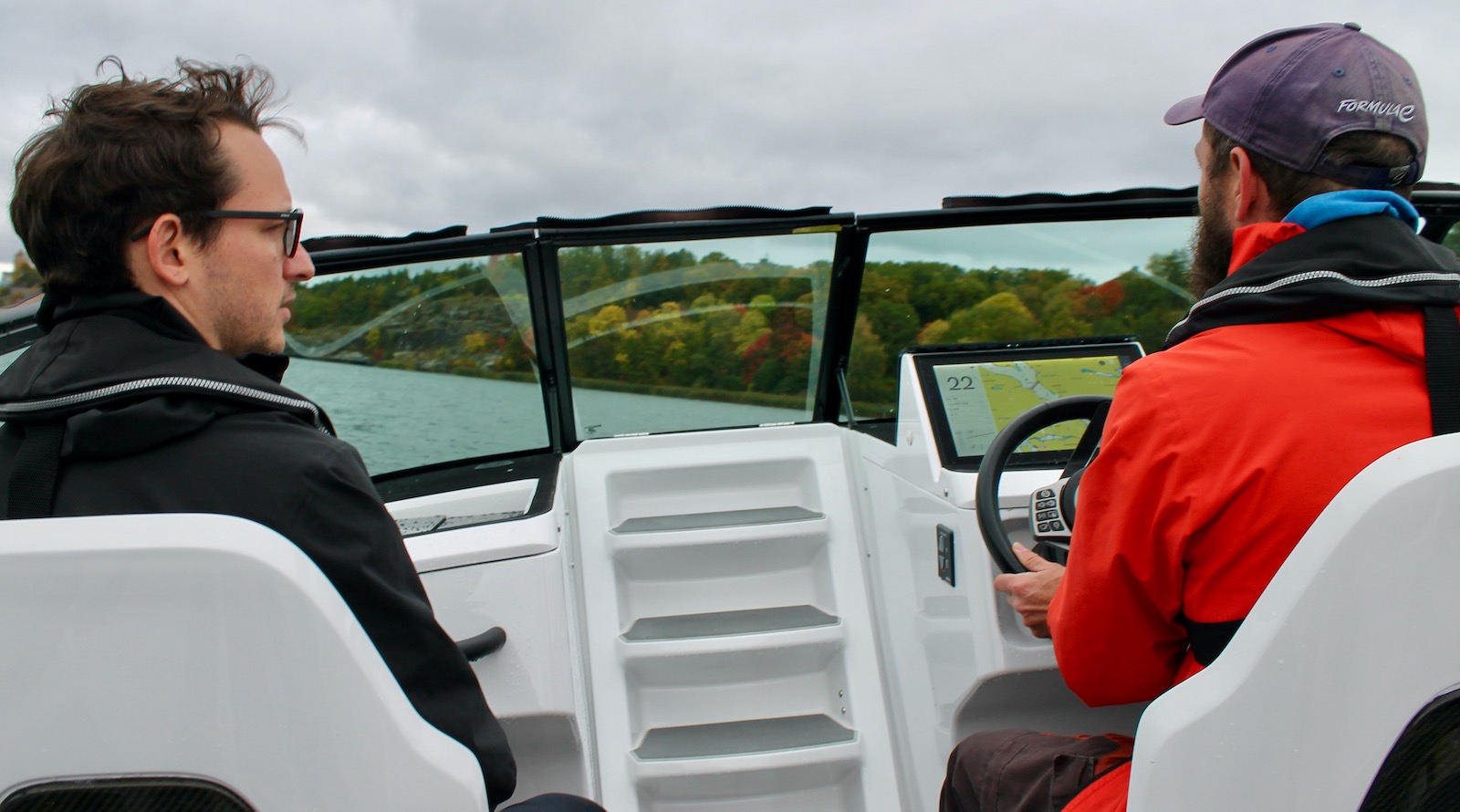
As you can imagine from what I just asked you to imagine, it is impossible to describe exactly what happens in your brain when a heavy boat lifts itself silently out of the water at high speed, and everything goes quiet. It’s tempting to compare the experience with the move from a car with an internal combustion engine to one with an electric drivetrain, but that won’t work. The electric car will be silent at first, but as speed increases, so does the noise and lack of stability.
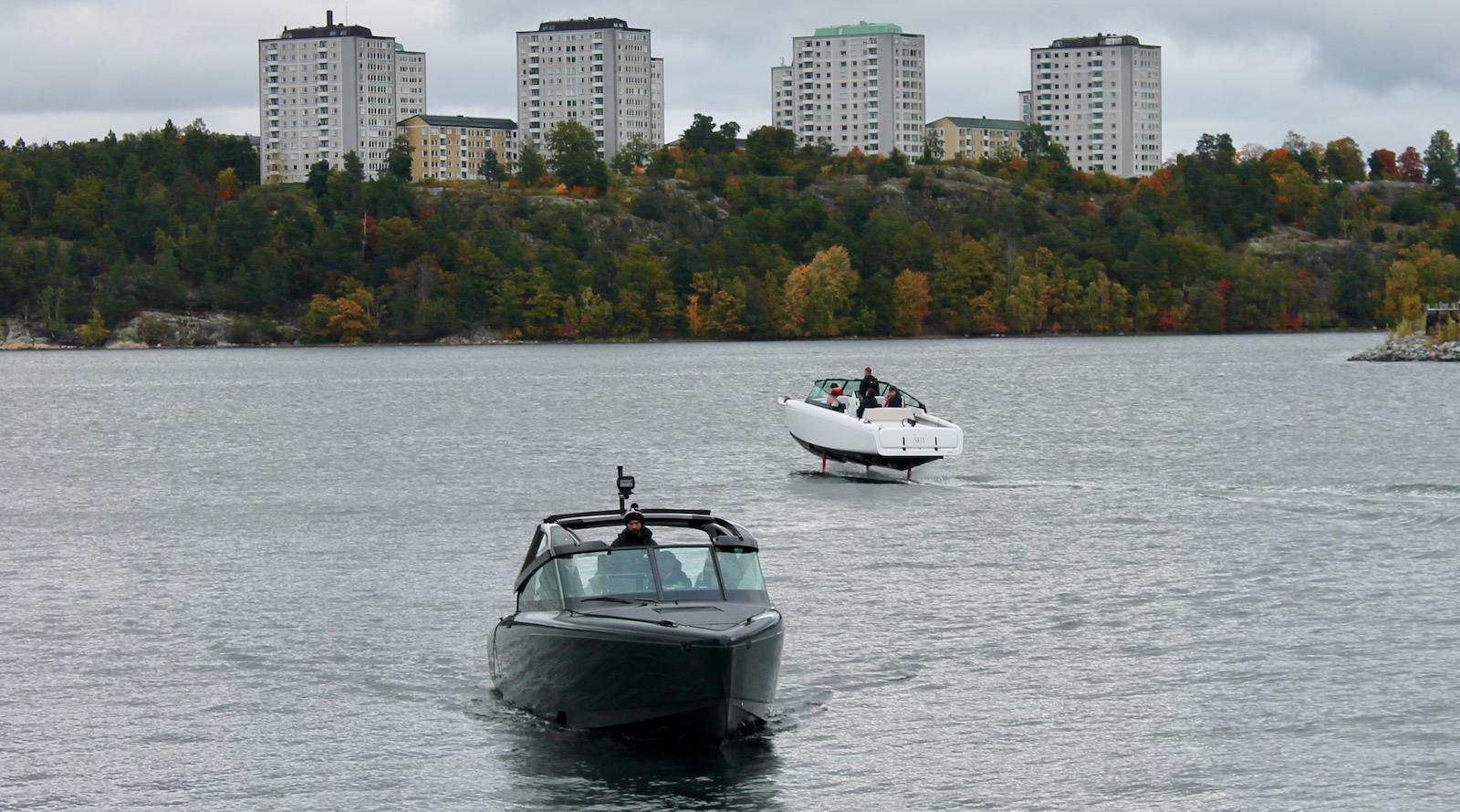
I think you have to be an astronaut to understand what increasing speed and simultaneously decreasing noise and vibrations feels like when getting out of the earth’s atmosphere. So for most people, it’s easier to get a ride on a Candela vessel, and sure enough, now it is possible to many people.
Meet The Candela Team
My first encounter with the impressive technology that constitutes the brand Candela was indoors a few weeks ago, at the factory in Sollentuna just outside the center of Stockholm, Sweden. I am here with my friend Esben Krog, who is working hard to establish low cost electric and fast transportation on the waters around our hometown of Aarhus, Denmark. He arranged it so that I got invited too, so the inside story of Candela could reach further.
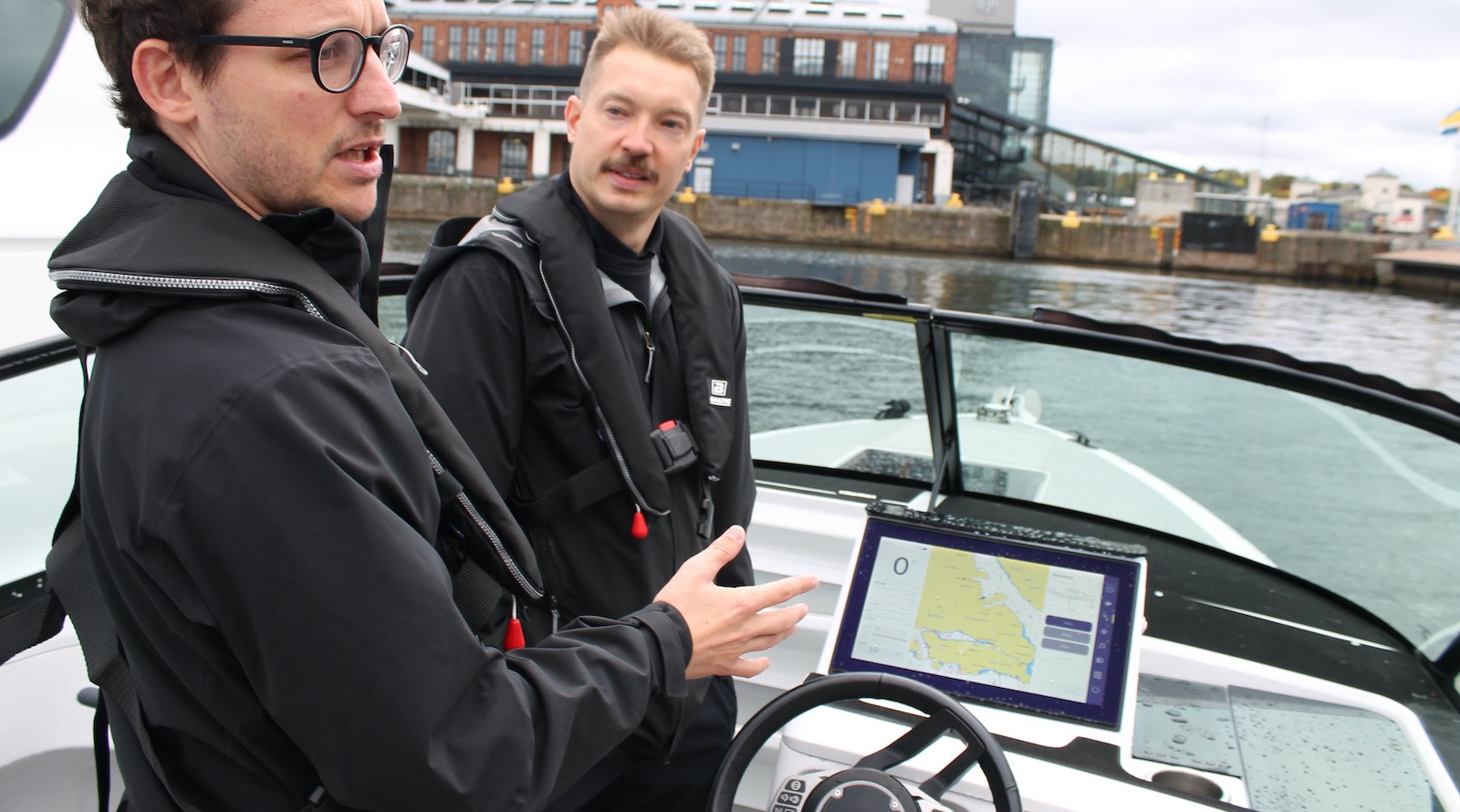
Candela is celebrating its 10th year of existence. CEO Gustav Hasselskog started the company from scratch with the objective to prove an electric, self-stabilizing, hydrofoiling powerboat was possible. The motivating idea being that energy efficiency would be off the charts. Gustav tells us that he approached over 90 potential investors before only 1 investor believed it would be possible. Now more than 200 people of at least 30 nationalities work at Candela.
Candela C-8
After excruciatingly hard work and many prototype failures, the then very small team finally made a 7-meter long hull fly on foils — the C-7. It had an outboard motor housing with an off-the-shelf electric motor transferring power to the screw propeller like any other fossil fueled outboard would do, but instead of a tank of gasoline it had a battery mounted in the hull. This solution did eventually succeed in hydrofoiling, but it wasn’t perfect.
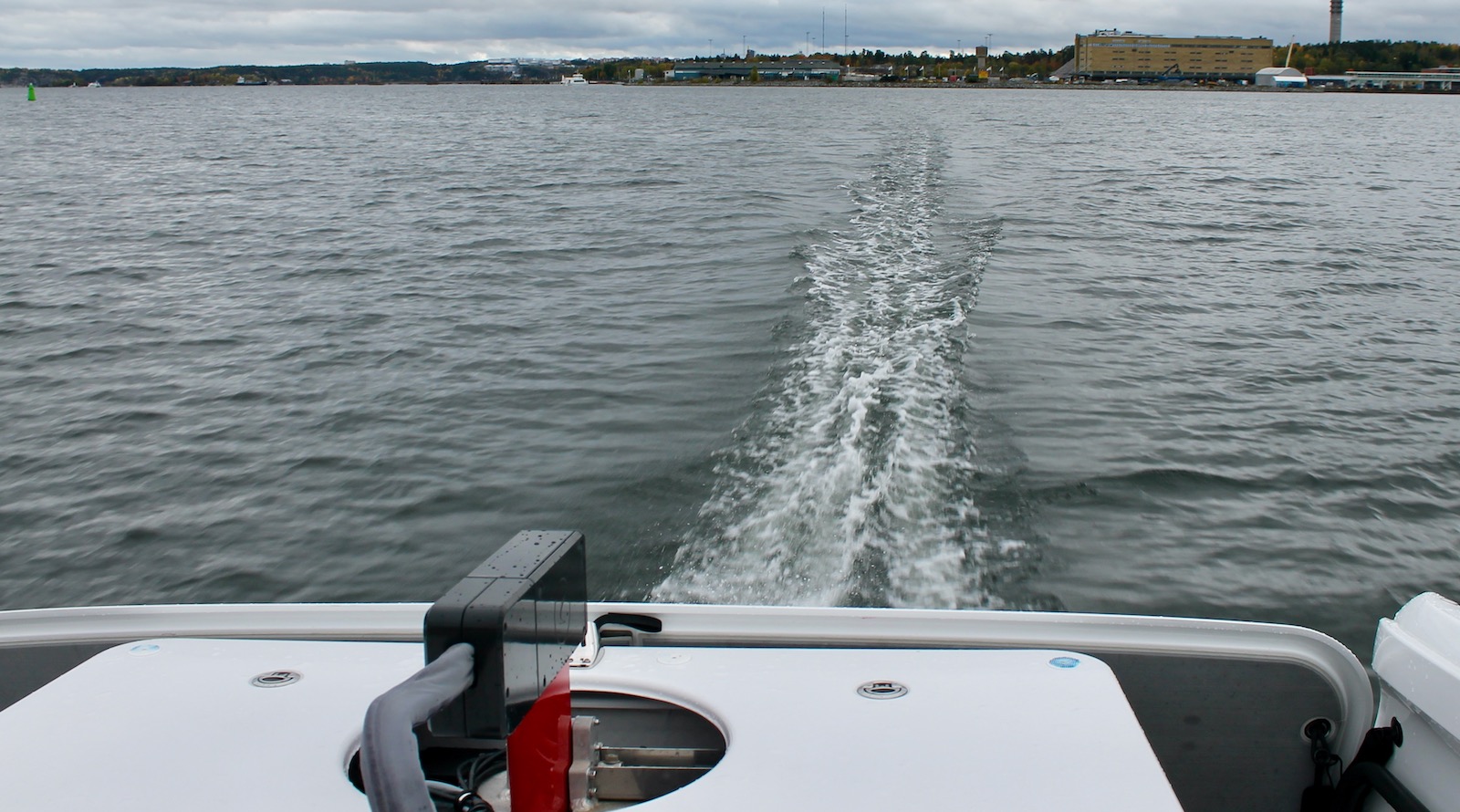
The secret sauce behind the success of Candela’s next model, the C-8, is the ingenious drivetrain, the C-Pod — fully submerged, inboard strut-mounted, direct drive, counterrotating twin electric motors. Designed fully in-house, this engineering masterpiece is what made the Candela dream come true.
Candela P-12
The main reason for us to come to Stockholm this time around was to experience the all-new small passenger ferry P-12. It has a 12-meter long catamaran hull and 4 struts with 2 powerful motors in the back and a 2-piece linked foil in front. In a configuration for public transport it can carry 30 passengers, but it can obviously also be configured for commercial freight, leisure, and much more.
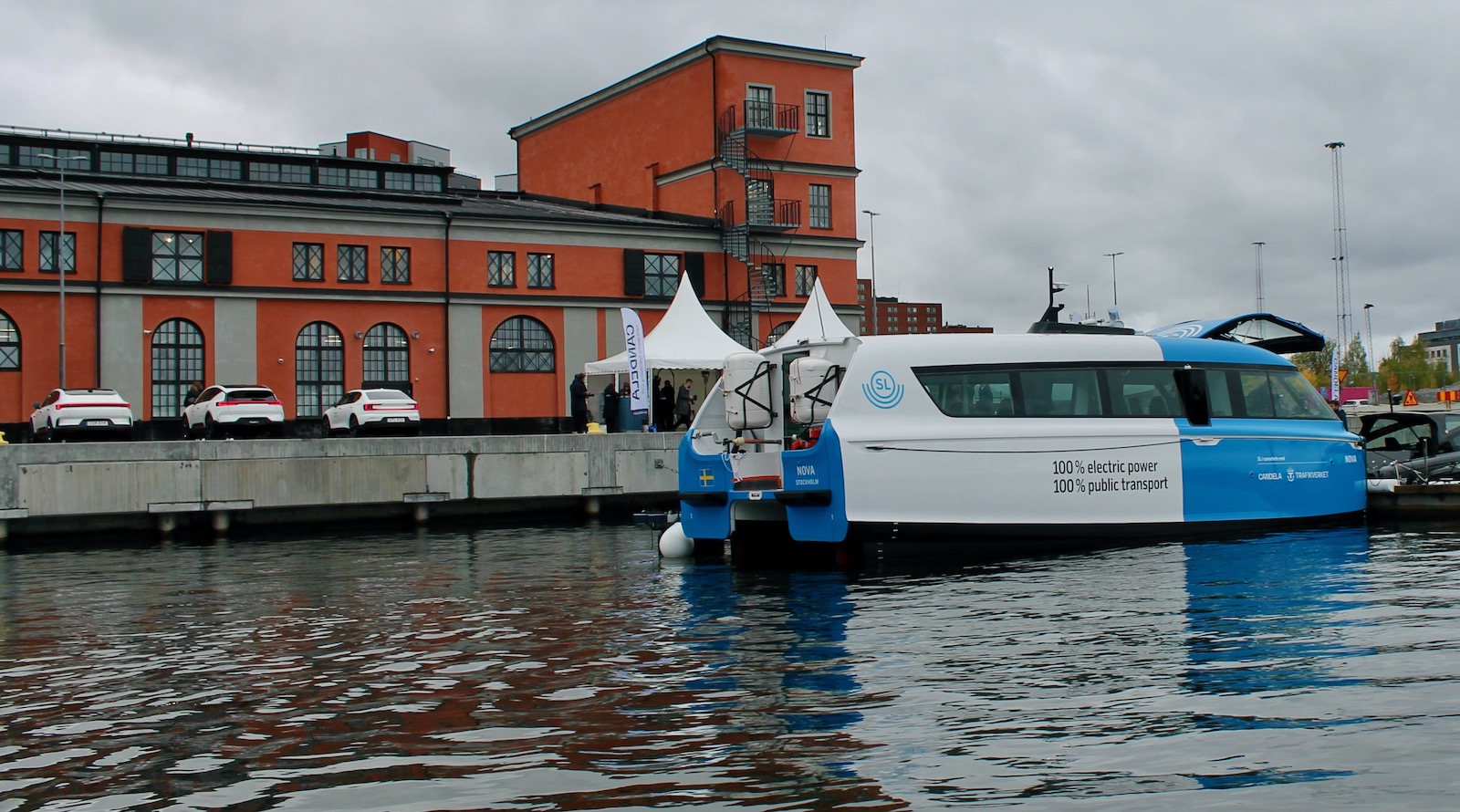
The P-12, being an indoor experience, makes the flying even more astonishing. Meaning, if you don’t pay attention, you will miss it altogether. The catamaran hull makes it stable at low speeds, and the transition to foiling is so seamless that you can even be standing up and not lose your balance for a second. Like a perfectly balanced modern elevator, the world moves around you, but you don’t notice.
Needless to say, the software has to operate very precisely to make this happen, and with 400 measurements a second of water surface, tilt, roll, and more, ride adjustments happen 100 times a second, making even banking in turns impossible for your body to detect. Perfect balance.
The Hardware
On the factory floor we are introduced to every part of what makes the C-8 and P-12, the most visually impressive being the one-piece carbon fiber catamaran double hull of the P-12. In a clever way, each hull has 4 breakaway triangles of carbon fiber on front and back for easier repair and to prevent leakage in case of impact.
The C-8 carbon fiber hull is very sleek looking, but when you get closer you see the indents in the hull making it possible to retract the foils all the way up flush, so that it’s able to achieve planing as well as to land on a beach if necessary.
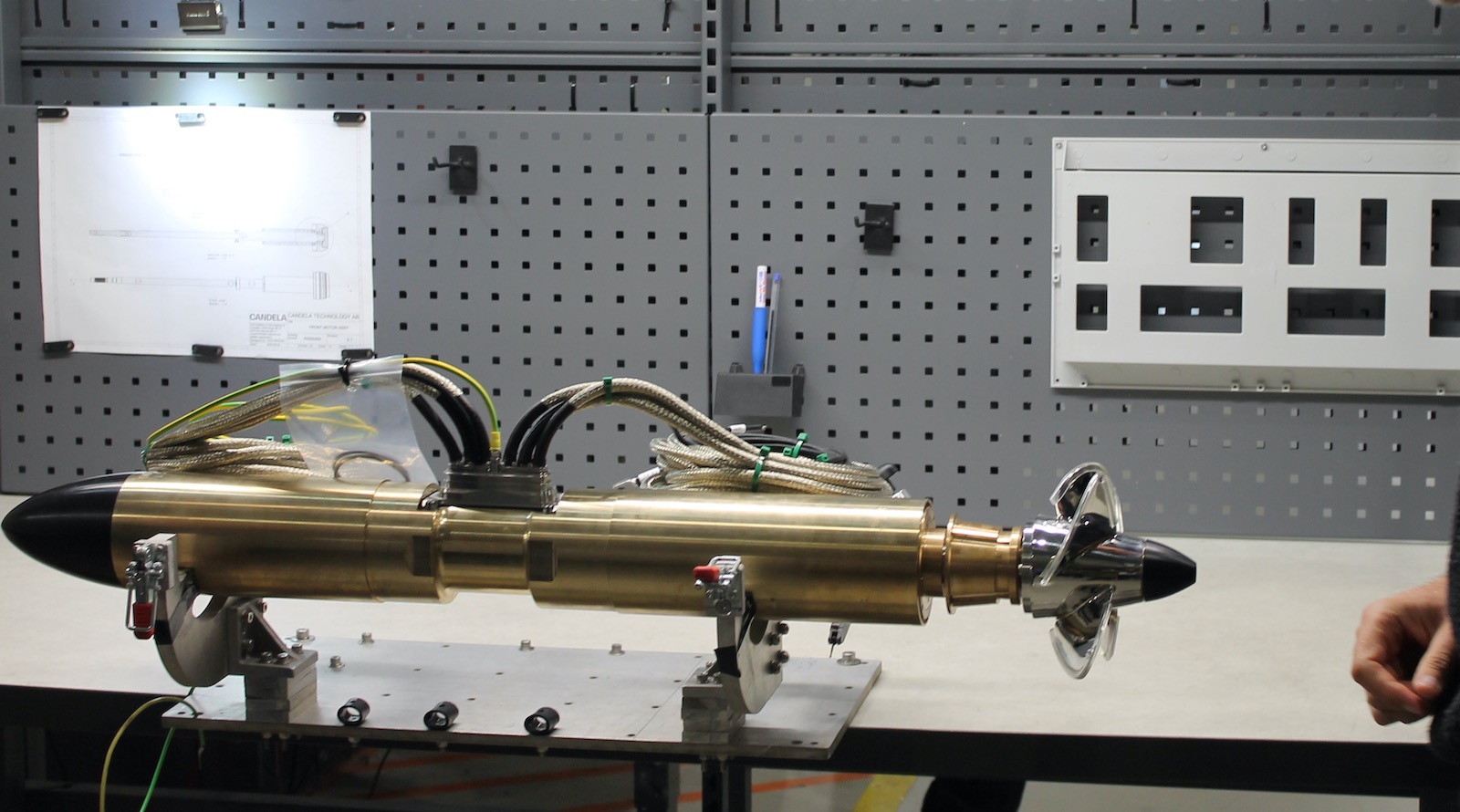
The Candela motors are really impressive works of art. It reminds me that when something achieves its optimum level of efficiency it more often that not is just beautiful to look at. I mean, look at it! Why the stunning looking brass housing? Passive cooling. This thing is machined in one piece, 2 stators and rotors are inserted from each end, with one propeller rod rotating counter inside the other, making rotating forces cancel each other out. The nominal power output of the C-8 motor is 50 kW when at speed, being cooled effectively through the corrosion resistant brass housing by the flow of water.
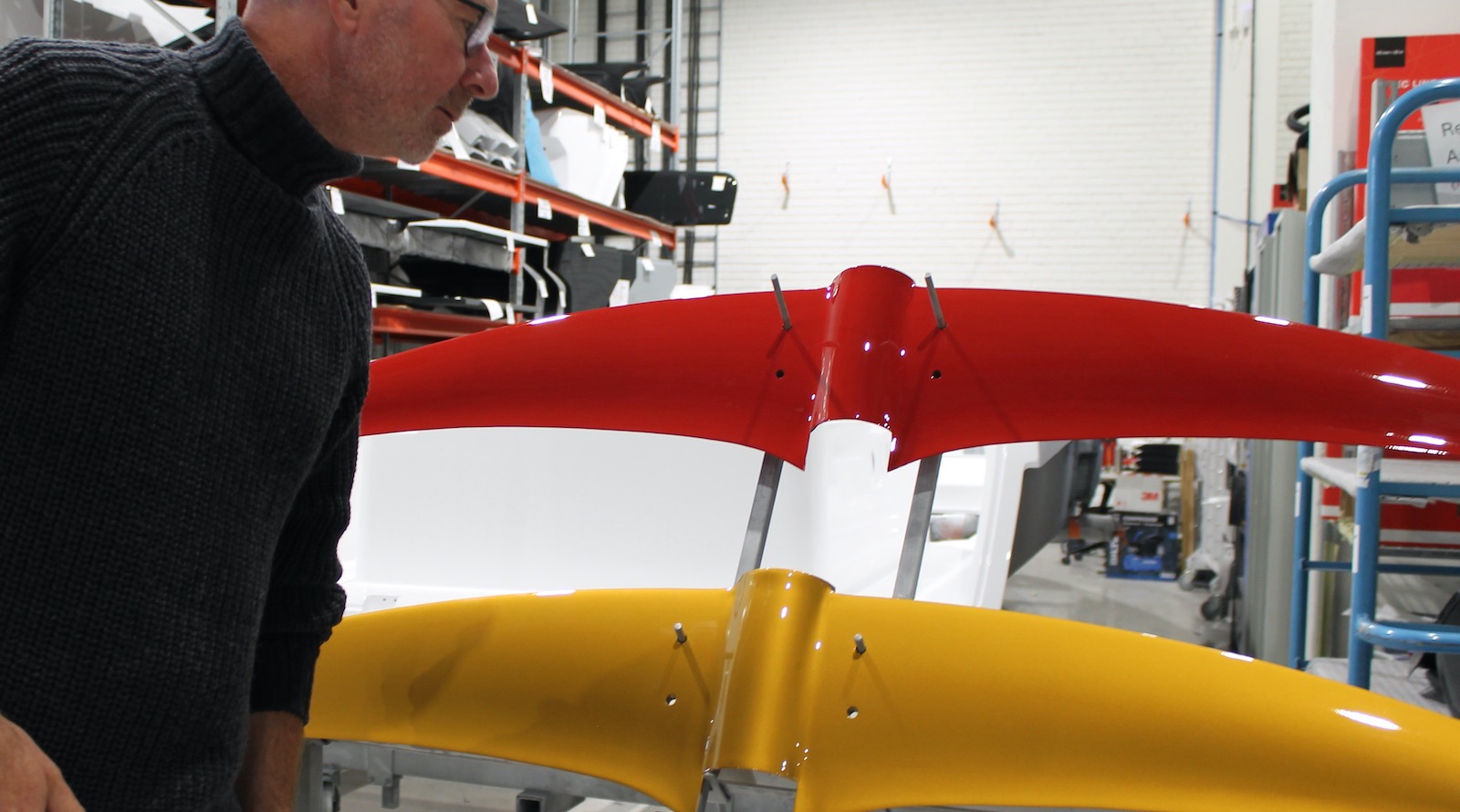
The P-12 has almost identical but larger and more powerful motors at a nominal output of 110 kW (160 kW peak for takeoff) mounted on each hull’s aft strut. They are built a bit more modular, so that service time in commercial applications can be kept very low.
The battery pack in the C-8 comes from Polestar, hence the many Polestar cars parked at the harbor when we tested the boats. It is placed and sealed unmodified in the bottom of the hull. In the P-12 it’s an entirely different story due to its public transport applications. It has 2 battery packs from Kreisel with a total capacity of 264 kWh, and the packs are so-called marine-grade, meaning the metal casing has to be strong enough to not burn through for at least an hour. Still, the gravimetric capacity is very good at around 160 Wh per kg.
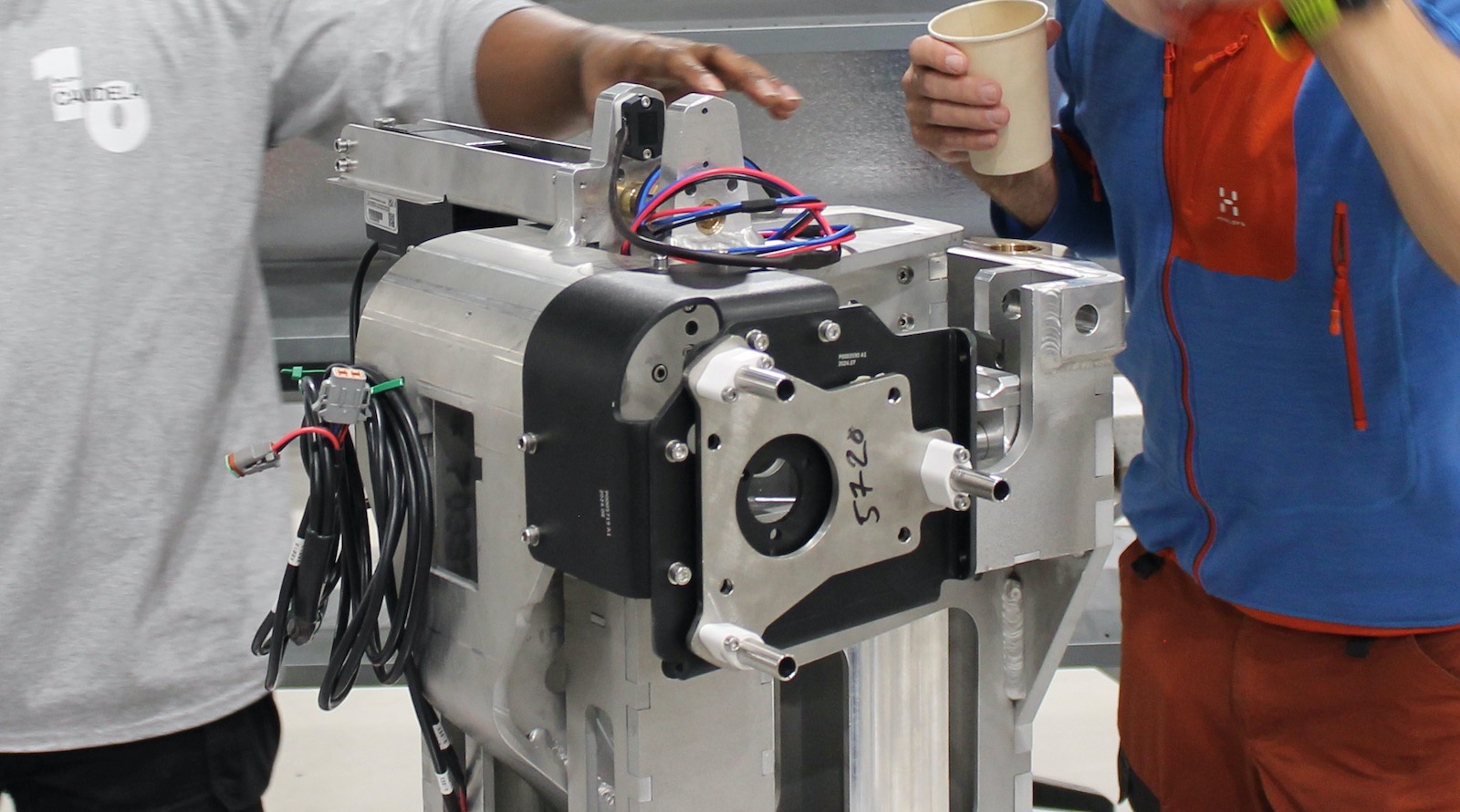
Our contact at Candela, Mikael Mahlberg, and his colleges were exceptionally welcoming and open to discuss every piece of hardware and software. Come to think of it, Candela has an almost completely vertically integrated production line. I saw very few off-the-shelf components, and the people manufacturing a certain piece knew everything about its function as well. For this factory tour, everything was set up so that every function could be demonstrated.
By the way, it is apparent that the C-8 and P-12 hulls look somewhat different from non-foiling boats, because a lot of work has been put into making them as aerodynamic as possible, because they don’t touch the water most of the time!
The Software
The software engineer at Candela, Kristian Sloth, has been with the company from the beginning, and he is the wizard that makes the hardware fly on his software. All systems are run on Linux operating systems, and depending on real-time criticality the various functions are coded in either C++ or Python.
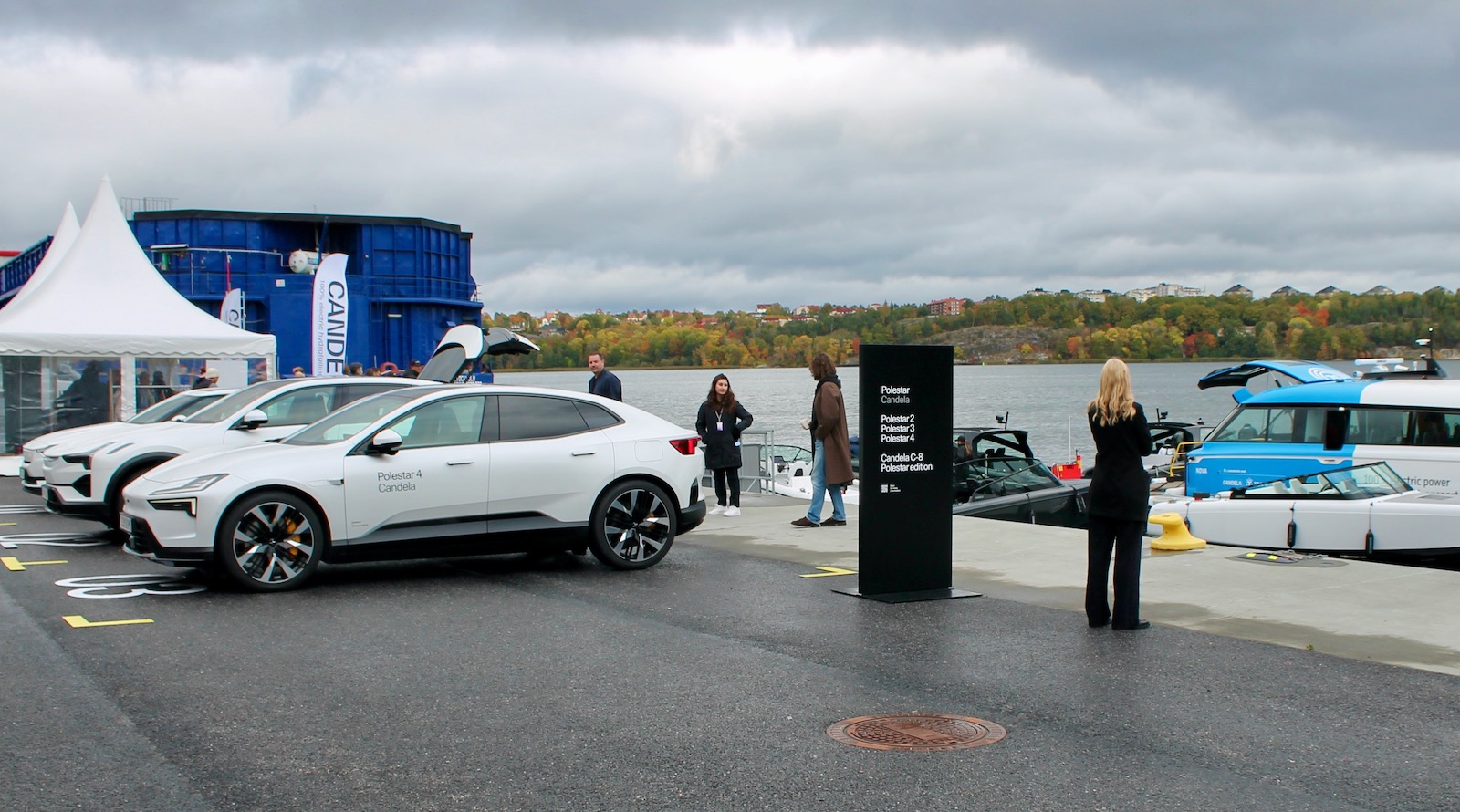
While we take a ride in the P-12, Kristian shows us wirelessly on his laptop the various sensor inputs and appropriate vessel responses in realtime. I am kind of blown away. We are doing 25 knots (50 kph/31 mph), hydrofoiling at an altitude of 1.3 meters on this 6 tonne “bus” and I can see in real time everything the vessel does 100 times each second to maintain such a smooth ride that I hardly realize we are traveling at all. And the most amazing thing is that the nominal power consumption right there and then is only about 160 kW (once up and running and acceleration is done). That is crazy efficient!
The Efficiency
Why hydrofoiling? Why not just planing? Planing on an electric drivetrain is fun! I tried it in Norway a couple years back and couldn’t stop smiling. The answer is efficiency. I mean, the numbers I saw here were hard to take in. I have never seen anything like it. In short: Hydrofoiling at 25 knots consumes as little energy per nautical mile as gliding along at about 5 knots. That’s insane!
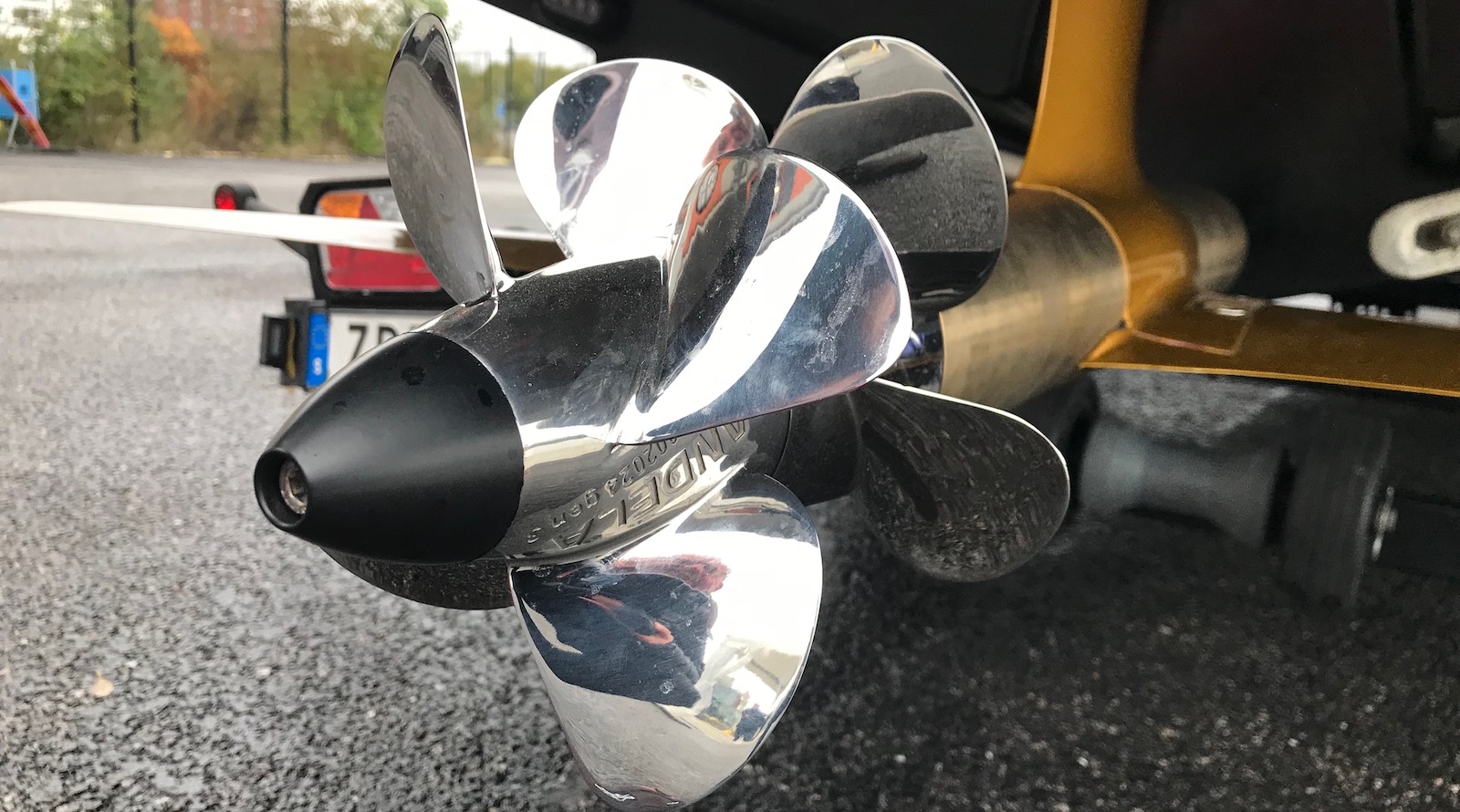
The C-8 was able to do 23 knots at 27 kW consuming 1.2 kWh/NM and the P-12 would cruise at 25 knots at 170 kW consuming about 7 kWh/NM, which is incredibly efficient considering the size of this vehicle!
The Magic
What Candela is actually doing here is opening up the waterways in a completely new way. Hyper-efficient transportation of goods and people on the surface of water in so many dense populated areas in the world. And remember, it is not only the efficiency that’s the game-changer here, with it comes the silence, and the absence of wake waves. So many pieces come together with this technology that you really have to experience it firsthand to understand the scope.
Who knows, you may have a chance sooner than you think. The P-12 is going to be manufactured in high numbers. Right now the capacity of the C-8 is one per week, and Candela is aiming to achieve this with the P-12 once production is up and running.
Before fast trains on rails and trucks on roads, the waterways were the only medium of mass transportation. You could even argue that since passenger transport by air became cheaper, the waterways have become somewhat less attractive. In Denmark we have been busy building huge bridges to rid the need of ferries, but the technology Candela demonstrates here could bring the waterways back to being the most convenient, fastest, and cheapest mean of transportation. At first for passengers, and then as foiling boats become foiling ships, we could be looking at very low cost in terms of tonnage per time unit.
Dare I compare with autonomous cars and trucks? Yes, because at the end of the day, it all comes down to the efficiency a technology unlocks. As with any other mode of transportation relying on batteries, it just gets better from here, with safer, lighter, and more powerful batteries in the future.
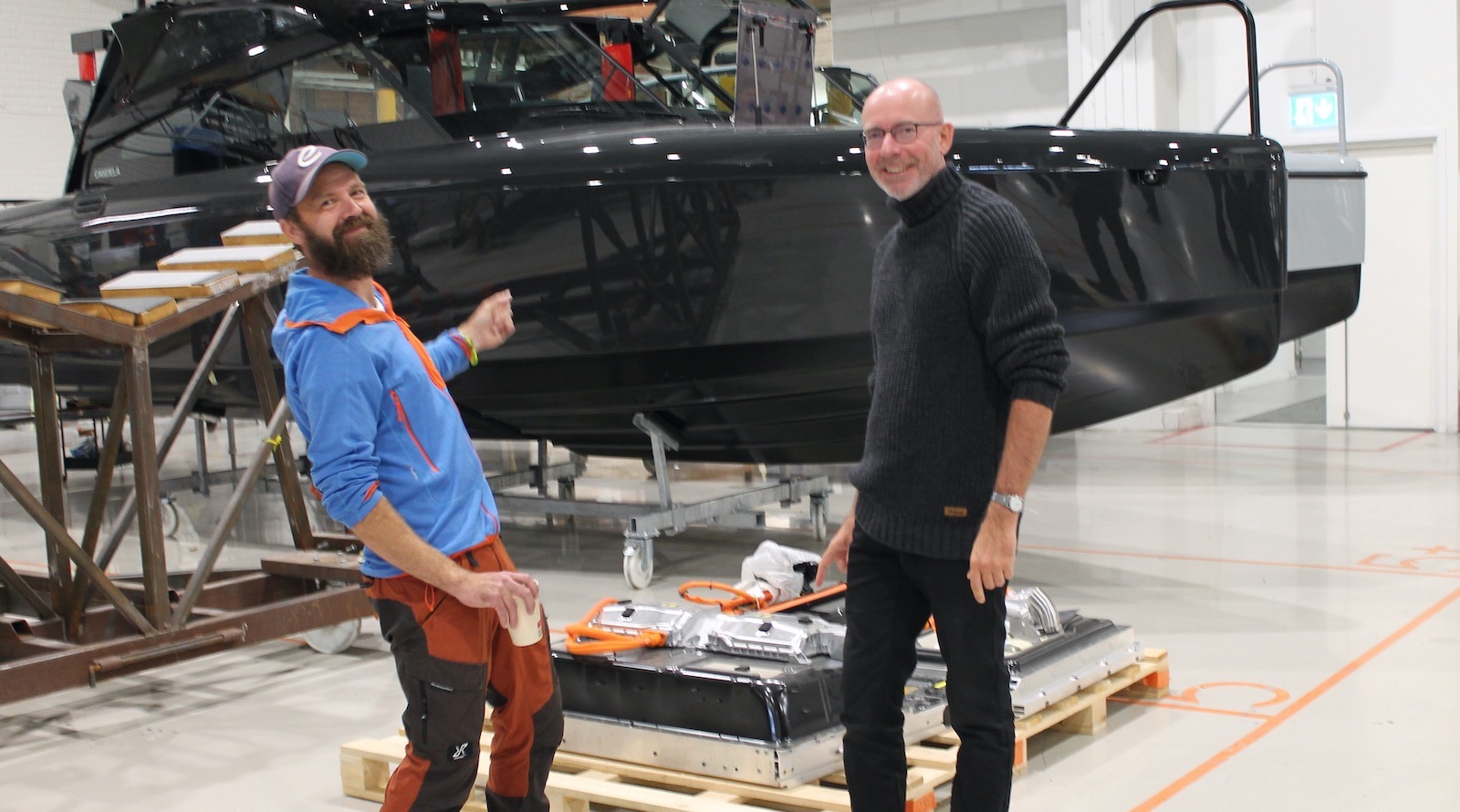
And with that, here are a few excerpts from the press release:
At 07:15 on a Tuesday morning, Stockholm’s new star, “Nova,” departed from its dock in the quiet suburb of Tappström, powered by its electric motors, and took off. Flying silently a meter above the water’s surface, it completed the 15 km route to Stockholm’s City Hall in just over 30 minutes.
For the delighted commuters on the world’s first electric foiling ship, the usual morning commute was almost cut in half.
For Stockholm — and potentially the world — this may signal a future where city water transport is sustainable, affordable, and faster than traveling by car.
“Nova” is the first of Candela’s new P-12 model to enter service. Its computer-controlled hydrofoil wings lift the hull above water, reducing energy consumption by 80% compared to conventional vessels by cutting water friction.
“In many cities, the shortest route is over water, which is humanity’s oldest infrastructure. Today, our waterways are underutilized due to the high costs, wake concerns, and emissions of traditional vessels. If we can unlock this potential, we can make cities more attractive,” said CEO Gustav Hasselskog.
With its energy efficiency, “Nova” requires no costly dock infrastructure, charging instead at a regular car fast charger at the City Hall. Its long range allows it to match the schedule of conventional diesel ferries, with recharging during the typical lunch break.
“Nova” will operate through fall 2024 until the waters freeze, resuming service in spring and continuing through August 2025. The route is a pilot project run by Candela, Trafikverket, and Region Stockholm (SL), aiming to explore how hydrofoil technology can enable faster, more affordable, and emissions-free maritime travel, creating new transit patterns in Stockholm.
But even before its official launch, Candela’s P-12 had already made waves in the maritime industry. In 2024, Candela received orders from Saudi Arabia, New Zealand, and Berlin, with additional clients to be announced.
“For the first time, there is a vessel that makes waterborne transport faster, greener, and more affordable than land transport. It’s a renaissance for the world’s waterways, and it’s exciting that Stockholm is leading the way,” said Gustav Hasselskog.

Chip in a few dollars a month to help support independent cleantech coverage that helps to accelerate the cleantech revolution!
Have a tip for CleanTechnica? Want to advertise? Want to suggest a guest for our CleanTech Talk podcast? Contact us here.
Sign up for our daily newsletter for 15 new cleantech stories a day. Or sign up for our weekly one if daily is too frequent.
CleanTechnica uses affiliate links. See our policy here.
CleanTechnica’s Comment Policy



